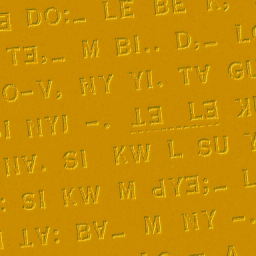
An abjad is a type of writing system where each symbol or glyph stands for a consonant, leaving the reader to supply the appropriate vowel. So-called impure abjads do represent vowels, either with optional diacritics, a limited number of distinct vowel glyphs, or both. The name abjad is based on the old Arabic alphabet's first four letters—a, b, j, d—to replace the common terms "consonantary" or "consonantal alphabet" to refer to the family of scripts called West Semitic.
The Brahmic scripts are a family of abugida or alphasyllabary writing systems. They are used throughout the Indian subcontinent, Southeast Asia and parts of East Asia, including Japan in the form of Siddhaṃ. They are descended from the Brahmi script of ancient India, and are used by languages of several language families: Indo-European, Dravidian, Tibeto-Burman, Mongolic, Austroasiatic, Austronesian, and Tai. They were also the source of the dictionary order of Japanese kana.

The Tibetan alphabet is an abugida used to write the Tibetic languages such as Tibetan, as well as Dzongkha, Sikkimese, Ladakhi, and sometimes Balti. The printed form of the alphabet is called uchen script while the hand-written cursive form used in everyday writing is called umê script.

The Tamil script is an abugida script that is used by Tamils and Tamil speakers in India, Sri Lanka, Malaysia, Singapore, Indonesia, and elsewhere to write the Tamil language, as well as to write the liturgical language Sanskrit, using consonants and diacritics not represented in the Tamil alphabet. Certain minority languages such as Saurashtra, Badaga, Irula, and Paniya are also written in the Tamil script.
The Ol Chiki script, also known as Ol Cemetʼ, Ol Ciki, Ol, and sometimes as the Santali alphabet, is the official writing system for Santali, an Austroasiatic-Munda language recognized as an official regional language in India. It has 30 letters, the forms of which are intended to evoke natural shapes. The script is written from left to right.
The shapes of the letters are not arbitrary, but reflect the names for the letters, which are words, usually the names of objects or actions representing conventionalized form in the pictorial shape of the characters.

The Fraser alphabet or Old Lisu Alphabet is an artificial script invented around 1915 by Sara Ba Thaw, a Karen preacher from Myanmar, and improved by the missionary James O. Fraser, to write the Lisu language. It is a single-case (unicameral) alphabet. It was also used for the Naxi language, e.g. the 1932 Naxi Gospel of Mark., and used in the Zaiwa or Atsi language e.g. the 1938 Atsi Gospel of Mark.
Uniscribe is the Microsoft Windows set of services for rendering Unicode-encoded text, especially complex text layout. They are implemented in the DLL USP10.DLL. USP10.dll became available to the public with Windows 2000 and Internet Explorer 5.0. In addition, the Windows CE platform has supported Uniscribe since version 5.0.
The Assamese script is a writing system of the Assamese language. It used to be the script of choice in the Brahmaputra valley for Sanskrit as well as other languages such as Bodo, Khasi, Mising etc. It evolved from Kamarupi script. The current form of the script has seen continuous development from the 5th-century Umachal/Nagajari-Khanikargaon rock inscriptions written in an eastern variety of the Gupta script, adopting significant traits from the Siddhaṃ script in the 7th century. By the 17th century three styles of Assamese script could be identified that converged to the standard script following typesetting required for printing. The present standard is identical to the Bengali alphabet except for two letters, ৰ (ro) and ৱ (vo).
Indosphere is a term coined by the linguist James Matisoff for areas of Indian linguistic and cultural influence in Southeast Asia. It is commonly used in areal linguistics in contrast with Sinosphere.

The Tocharian alphabet is a version of Brahmi script used to write the Central Asian Indo-European Tocharian languages, mostly from the 8th century that were written on palm leaves, wooden tablets and Chinese paper, preserved by the extremely dry climate of the Tarim Basin. Samples of the language have been discovered at sites in Kucha and Karasahr, including many mural inscriptions.
The Tai Aiton language is spoken in Assam, India. It is currently classified as a threatened language, with less than two thousand speakers worldwide. Its other names include Antonia and Sham Doaniya.
Kha is the second consonant of Indic abugidas. In modern Indic scripts, kha is derived from the Brahmi letter , which is probably derived from the Aramaic ("Q").
Ga is the third consonant of Indic abugidas. In modern Indic scripts, ga is derived from the Brahmi letter , which is probably derived from the Aramaic after having gone through the Gupta letter .
Gha is the fourth consonant of Indic abugidas. In modern Indic scripts, gha is derived from the Brahmi letter , which is probably derived from the Aramaic ("H/X") after having gone through the Gupta letter .
Ṅa is the fifth consonant of Indic abugidas. In modern Indic scripts, It is derived from the Brahmi letter after having gone through the Gupta letter .
Cha is the seventh consonant of Indic abugidas. In modern Indic scripts, cha is derived from the Brahmi letter , which is probably derived from the Aramaic letter ("Q") after having gone through the Gupta letter .
Jha is the ninth consonant of Indic abugidas. In modern Indic scripts, jha is derived from the Brahmi letter after having gone through the Gupta letter .










